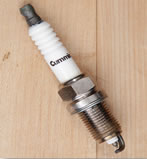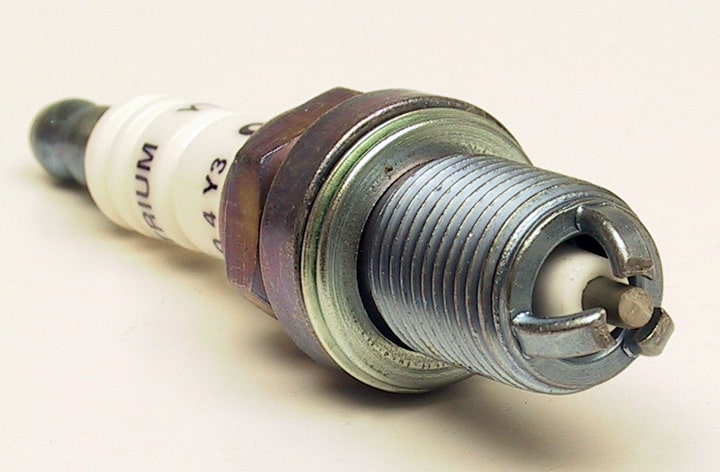By Kasia McBride, Marketing Manager, NGVi
Natural gas engines differ significantly from their diesel counterparts, and technicians who maintain them must have a full understanding of their operation and specific diagnostic parameters. Perhaps the most prominent difference these technicians must deal with is the fact that natural gas fuel ignites via spark ignition–not compression ignition, as in diesel engines. Natural gas vehicle engines use an ignition system, including spark plugs and coils, to ignite their fuel/oxygen mixture.

Why Ignition Systems in Natural Gas Engines Can Be “Tricky”

Because natural gas is harder to ignite, the gap between the electrodes of the spark plug must be properly sized in order to help the spark jump the gap. If the gap is incorrect it will affect the energy needed to spark, which can cause misfires or poor ignition of the fuel mixture. For instance, if the gap is too wide, the spark is going to take the path of least resistance and go to the ground through another source, causing misfire. This could potentially damage coils and coil extensions.
Proper Gap is Important
To avoid this situation, engine and ignition manufacturers publish recommended gap measurements for the spark plugs. The recommendation for the gap in the spark plugs used in Cummins engines is .013 to .015 in. The recommended gap varies widely for light-duty engines due to variables, although most gasoline engines start out with the plugs set anywhere from .035 to.045 in. or higher. For light-duty natural gas vehicles, technicians should check with the fuel system manufacturer or upfitter for the recommended spark plug gap.
It is important to always check the gaps of the plugs when installing new ones. If the gaps are not all the same, combustion in the cylinders will be uneven or incomplete, which over time will cause undue wear on various components. Cummins recommends to visually inspect plugs to ensure that the ground electrode is parallel to the center electrode and aligned along the center line of the plug.
Because of the thin, protective coating (typically made of iridium) on the spark plugs, it is not recommended that the gap of the plug be changed. Cummins recommends to only use a wire spark plug gap tool to check the specifications. Careful visual inspection should be made as to whether the right spark plugs are used and that they have no signs of: flash-over onto the porcelain, electrode deposits, worn or missing electrodes, excessive or insufficient gap, or any signs of aluminum or other contamination.
Coils Can Be Tricky Too

Due to the high temperaturesthat can be present in the spark plug well, strain can be placed on the materials that help insulate the electromagnetic field at the coil. The potential for cracking becomes greater under conditions in which the temperature fluctuates dramatically from cold to hot. If a crack does exist in the insulating materials, the electric current will take the path of least resistance through the block, thus bypassing the spark plug completely.
Inspecting the Ignition System Helps Prevent Performance Problems
To avoid major problems with the ignition system components, it is critical, at minimum, to perform the inspection, maintenance and replacement of plugs and coils at recommended manufacturer intervals. If the engine is converted and the plug gaps aren’t changed, there should be recommendations from the vehicle upfitter regarding their correct replacement schedule. The upfitter should also provide documentation specifying the plug gaps for when plugs are replaced.
Early Replacement of Coils and Plugs

Once Again, Training is the Key
Here is the bottom line: with any new technology, sufficient technician training is a must. Traditional diesel technicians are not commonly familiar with NGV ignition systems, and even seasoned technicians should not be expected to possess the specific knowledge necessary to avoid serious economic impacts from poorly adjusted, poorly calibrated, or damaged components. By better understanding ignition system fundamentals, being able to determine the root cause of ignition problems, and being familiar with the best practices for ignition operation and maintenance, technicians can not only increase the service life of NGV engines, but also save their company thousands of dollars by reducing maintenance costs and vehicle downtime.

